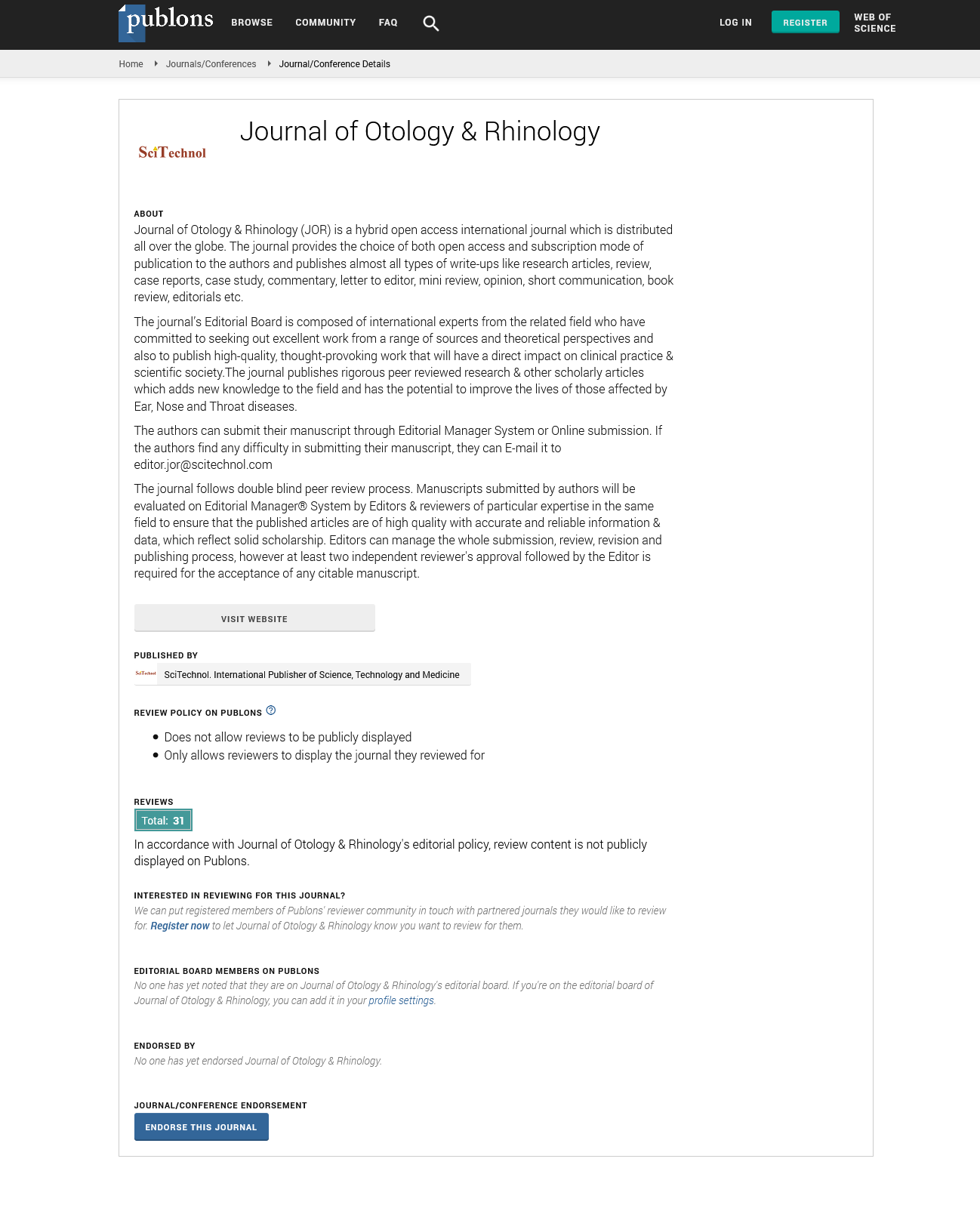Research Article, J Otol Rhinol Vol: 9 Issue: 3
Prevalence of Hearing Loss in Type 2 Diabetes Mellitus in Port Harcourt, Nigeria
OsujiAE1*, Lilly-TariahOBD1, UnachukwuCN2, NwankwoBE3
1Ear Institute, University College London, London, United Kingdom
2Department of Internal Medicine, University of Port Harcourt Teaching Hospital, Port Harcourt, Rivers state, Nigeria
3Department of Ear, Nose and Throat, Chukwuemeka Odumegwu Ojukwu University Teaching Hospital, Nnewi, Anambra State, Nigeria
*Corresponding Author : Osuji AE
Ear Institute, University College London, London, United Kingdom
Tel: 07539184453
E-mail: osujiliz@yahoo.com, osuji.adaobi.19@ucl.ac.uk
Received: May 28, 2020 Accepted: June 13, 2020 Published: June 19, 2020
Citation: Osuji AE, Lilly-Tariah OBD, Unachukwu CN, Nwankwo BE (2020) Prevalence of Hearing Loss in Type 2 Diabetes Mellitus in Port Harcourt, Nigeria. J Otol Rhinol 9:3. doi: 10.3752/jor.9(3).385
Abstract
Introduction:Diabetes mellitus (DM) is a chronic noncommunicable disease and chronic hyper-glycaemia is its main feature. In the presence of type 2 DM, hypertension, hyperlipidemia and obesity are common, and a cluster of these conditions is referred to as “metabolic syndrome”. Hearing loss is a common disability which can be a complication of DM or hypertension and results from microvascular disease that characterize each of these disease conditions. The aim of this study was to determine the prevalence of hearing loss in adults with type 2 DM adults in Port Harcourt, Rivers State, Nigeria. Patients and methods: This cross-sectional study was conducted in UPTH, Port Harcourt, Rivers State, Nigeria, and the study population comprised of patients with type 2 diabetes mellitus that attended medical out-patients clinic of the University of Port Harcourt Teaching Hospital, Port Harcourt, Rivers State, Nigeria. Results were analyzed statistically using SPSS 23 and presented in tables and figures. Results: There were 258 adult study participants, with 104 males and 144 females, with a male female ratio of 1:1. 4. The age range of study participants was 21- 89 years with a mean age of 55 ± 13. 17 years. The prevalence of hearing loss in this study population was found to be 32. 9%. There was no statistical difference in the gender prevalence of hearing loss in people living with DM. Conclusion: This study found that the prevalence of hearing loss among people living with Diabetes mellitus is remarkable, and significantly higher in the elderly population, and there is no significant difference in the prevalence of hearing loss between male and female adults living with diabetes mellitus. Recommendation: It is recommended that a holistic protocol of management of type 2 DM which includes hearing health assessments at regular intervals should be adopted to monitor the hearing acuity in people living with DM for early identification of hearing loss and timely intervention for treatment or rehabilitation when necessary. In addition, the need for an increased awareness campaign on hearing loss in DM cannot be over emphasized.
 Spanish
Spanish  Chinese
Chinese  Russian
Russian  German
German  French
French  Japanese
Japanese  Portuguese
Portuguese  Hindi
Hindi 


